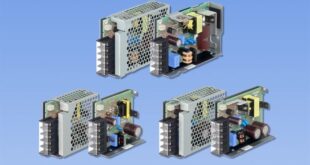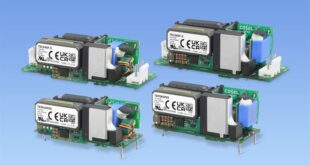ZF Friedrichshafen and Schaeffler are collaborating to develop new solutions for predicting the operating life of wind turbine gearbox components based on the actual loads that occur during operation.
Since September, the first wind turbine gearboxes equipped with sensors and condition monitoring systems have been supplying operating data to a cloud-to-cloud solution to enable this to happen.
The idea behind this project is to utilise ZF’s software solution for wind turbine gearboxes as part of a ‘smart’ system to make the expertise of further specialists available in a single platform and therefore provide wind farm operators with an aggregated overview of each gearbox.
Schaeffler is a preferred partner for rolling bearings here and supplies rolling bearing load analyses, while ZF itself assesses the loads placed on the gearbox components.
The project is designed to be open for the involvement of further companies such as lubricant experts and control system suppliers.
In the solution that is currently installed, pre-processed data from the condition monitoring system and other sensors are transmitted to the ZF cloud, while torque and speed data are forwarded to theSchaeffler cloud, where a detailed simulation model of the ZF gearbox has been implemented as a virtual twin.
The calculation results from the virtual twin are transmitted back to the ZF cloud and are then available on the ZF software’s dashboard for use in monitoring the gearbox’s condition.
Expanded planning horizons for wind farm operators
Monitoring the actual loads that occur in wind turbine gearboxes allows ZF and Schaeffler to create a basis on which new data-based models can be developed.
In the first stage, the rating life and the static load safety factors of the gearbox bearings are assessed based on the available input variables using the virtual twin (analogous to the procedure used in the certified design of the bearings).
In the subsequent stage, both fatigue and further damage mechanisms can be taken into consideration. This is necessary because the operating life of rolling bearings in wind power applications is generally not limited by conventional material fatigue but by surface-initiated damage (eg, due to excessive wear or lubricant contamination).
Schaeffler has already developed an algorithm for this purpose that can be used to calculate the risk of surface-initiated damage.
Adapting and testing new methods of this kind for predicting the condition of rolling bearings specifically in the wind energy sector is an integral part of the collaboration with ZF.
The load data-based assessment of the calculation results from the virtual twin will in future enable harmful operating conditions to be detected early, allowing the lead time for initiating maintenance measures to be significantly shortened compared to existing condition monitoring systems. It will also be possible to initiate suitable countermeasures to prevent critical operating conditions and so extend the bearings’ operating life.
Wind farm operators will therefore have a tool at their disposal that significantly extends their planning horizons.
Adjustment of bearing operating life based on real data
Based on the actual cumulative load to which each bearing in the gearbox has been subjected, Schaeffler will also be able to offer optimised product recommendations with a relatively long lead time before the next maintenance interval. This can include carrying out a one-to-one replacement of the bearing in question, upgrading to a coated version or a bearing with a higher-performance material or special heat treatment.
It will therefore be possible to better assimilate the operating life of all bearings contained in the gearbox as a whole.
The coming months will be spent in testing the IT infrastructure that has been installed, as well as the transfer of data in practice.
The findings gathered from the technical, legal and economic challenges involved will be integrated into the subsequent volume production application.
 Engineer News Network The ultimate online news and information resource for today’s engineer
Engineer News Network The ultimate online news and information resource for today’s engineer



